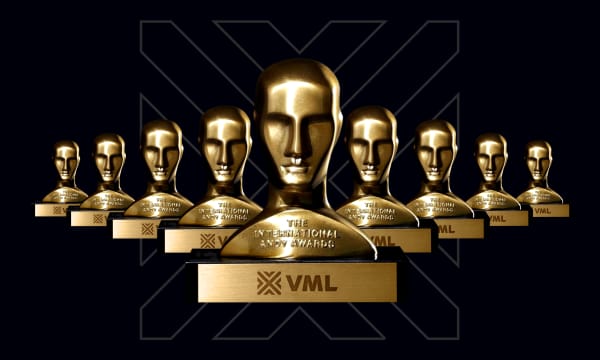Dr. Morie is a pioneer in the field of virtual reality, with 25 years of experience studying its therapeutic applications. As the founder of All These Worlds, she creates virtual applications for mindfulness, rehabilitation, and immersive social VR.
In the 1990s, researchers at the University of Washington demonstrated that VR could effectively manage pain in burn victims. While therapeutic VR is not new in medical circles, VR’s recent resurgence in the mainstream could easily lead to more widely adapted uses for health and wellness. Below, Dr. Morie discusses mindfulness, commercial applications of VR, and VR for good.
Tell us about your work with All These Worlds.
I look at virtual reality as something that can mitigate issues for isolated populations. A lot of my work is in the research domain to determine the efficacy of any of these particular interventions. So it’s less about putting out commercial applications, and more about testing to see whether or not VR is actually good for some of these things.
In terms of VR in the bigger picture of health, we are looking at a big resurgence right now. It may not be as big as people think, because the media’s certainly giving it a lot of play. I think the jury is out as to whether it will be super successful this time, or whether it will go the way of games and entertainment.
Getting it accepted and adopted in the healthcare industry is the big first step that has to be taken. And a lot of that depending on proving whether it is effective. That’s the biggest gap right now in the new resurgence of VR. Are we just throwing this stuff out there, or are we actually showing that it works?
You say that proving the effectiveness is one of the biggest challenges right now. Do you also see a usage gap? Do people have a sense that they want to use it?
We are at a threshold of VR becoming a medium that can serve many purposes, just like TV in the late 1940s. TV needed to have a lot of different kinds of content on it to become a mass item. That’s true of VR as well. It has to have many purposes before it becomes accepted into the mainstream.
Right now, the demographic with the most acceptance is gamers. It’s going to take meaningful applications to get people to accept it. That being said, there are some wonderful anecdotes about older people in retirement homes where they put on the VR gear and they’re just blown away. It adds a little bit of spice and excitement to something that in later years can be kind of boring and lackluster. That to me is where I think VR could be really adopted quickly.
Do you see commercial applications for this type of VR?
Commercially, I think there are quite a few startup VR companies that say they’re working on health. But they’re not tied into the system enough. They are not really getting to the people that are the decision makers, the end users. That’s a bit of a gap we have right now.
In many of these startups, there’s no real health experts there. They may have one or two people that worked on something in health, but we really need to look at it in a more holistic fashion for it to take hold. It’ll take hold eventually, but it’s going to be in fits and starts unless we get some of the stakeholders really involved in the early stages.
How do health and wellness fit into the VR sector overall?
I find it the most fascinating part of VR. I actually did a dissertation that I concluded in 2007, and it was about VR for meaningful applications. That’s health and wellness, as well as higher arts. Things that connect us to our environment; things that connect us to people; things that allow us to raise our own consciousness.
I’ve spent 25 years trying to make VR more meaningful for people. More meaningful means it is personal, it is life-affirming and life-changing, and that pulls the health thing in totally. My work has focused on mental health, but I do believe VR has a lot of potential to help us with physical health, too: in terms of rehabilitation, your perception of yourself, and what you can and can’t do in your body. Because VR is an embodied medium.
We are just getting started. In ten years, we won’t even question it. It’ll be part and parcel of how we interact with the world, with the internet. But right now, it’s under-underutilized, mainly because of the stakeholders not getting involved.
There are a lot of people that want to work on what they call VR for impact, VR for meaning, VR for good. Those are the three things that people call it. About 50% of the people that I know in the Los Angeles VR-crazed community want to do that, but they have no idea how to make it happen.
Have there been any findings so far in your work that have surprised you?
The big finding for me is how persuasive virtual worlds can be. They totally hijack your cognitive system, and you believe that these things are real—because in your head, they are real. They are affecting you just like our physical reality affects you, with a few differences here and there. But the fact that they’re so persuasive means that they can be used for a lot of things.
The fact that we’re still looking at these things as mostly games and entertainment is, to me, a big surprise. I would like to see more practical and meaningful applications of these technologies. My biggest surprise is that we’re not using it more for meaningful stuff, and that we’re still looking at it as for its entertainment vehicle.
Now, I want to give you another anecdote. This is the story of Fran, who is a woman with Parkinson’s disease. Fran’s daughter saw her mother was having mobility problems and wasn’t getting out as much. And she made an avatar for her in the online game Second Life. Fran got in Second Life with her avatar, and she was meeting people and going around and doing things. One day she had to go out to the car, but she’d had a lot of trouble getting out and walking around. So she said to herself, “Wait, the avatar can do it.” And she got herself to the car with no problem.
This is an area we really need to investigate more. How can using an avatar leverage our control of ourselves and enhance it? I think there are other things that we can also leverage an avatar use-case study with, so that people feel younger or better about themselves, or more social. Say somebody is isolated or bedridden, but by inhabiting an avatar, they can have additions to their social life that are very fulfilling.
We’re going to be inhabiting more of these virtual worlds with avatars. Already, our kids have six or seven avatars in things like Minecraft and Club Penguin. They have no problem having an avatar. We can leverage that for all kinds of purposes.
What other research have you been working on recently?
I just completed a study with NASA that used virtual reality environments to mitigate some of the psychological issues that will be encountered by astronauts who go on long duration space missions—to Mars, for example.
So they’re going to be stuck in a tin can with a few other people for months on end, with no real time communication back to Earth. Exactly your perfect isolated population, right? Their big issues are sensory deprivation and social isolation. So we built a virtual world ecosystem and installed it in a Mars habitat in Hawaii, where six scientists were locked up for a year.
They could take virtual vacations. They could sit on a porch in a suburban neighborhood and listen to kids playing next door and the ice cream man going down the street, that kind of stuff. We also gave them ways to record their avatars, leaving those as messages for people back home. There’s no real time communication, but they could leave these messages, and build things for each other.
The bottom line of that whole project was that compared to a group that had been in this habitat for eight months, a control group that did not have the virtual world ecosystem—this group of six that was locked up for year fared better psychologically than that control group. So again, there is a study that says it’s good for isolated populations. I think that’s going to be a milestone study for uses of VR for this kind of application, and what we learned for these future astronauts can be applied more broadly out into the world.


